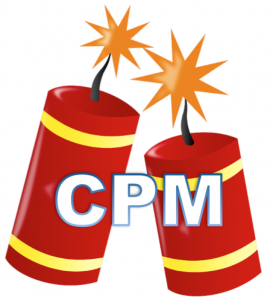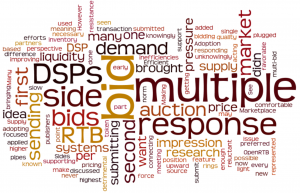Online advertising transactions are all CPM based. You might think my wild assertion is out of line. You might think you’re buying ads on a CPC or a CPA basis. But when a publisher is looking to sell ad inventory, they’re thinking about the CPM. “How many dollars can I get for every thousand ad views?” And when that CPA deal or that CPC deal comes in the publisher’s doing the math to convert that number into a CPM.
 For a CPA deal they’re estimating how many acquisitions they can send to the buyer for every thousand ad views. For CPC, how many clicks per thousand ad views. They’re boiling it down to a CPM because that’s how they can compare the deals. It works like this all the way up and down the funnel.
For a CPA deal they’re estimating how many acquisitions they can send to the buyer for every thousand ad views. For CPC, how many clicks per thousand ad views. They’re boiling it down to a CPM because that’s how they can compare the deals. It works like this all the way up and down the funnel.
The CPM has been around for a long time. With the advent of the RTB auction model, the CPM is very dynamic. Each impression up for auction is individually valued based on countless bits of information about the user, the page, the size, the date, the historical performance and a variety of other variables. Even though a separate auction is run for each impression, the bid prices are still in the form of a CPM. It’s in our blood. It is the end result of normalizing the value of an ad impression so that it can be compared to its peers.
Some Problems
I want to point out a couple of problems with the CPM. First and foremost, it’s a single number. This aspect causes a couple of secondary problems that put the buyers at risk. One of the big ones is that there’s no guarantee that the ad will actually show on the page. Steps have been taken to address this by several companies. The result of this problem is a topic near and dear to my heart: discrepancy. Read more







